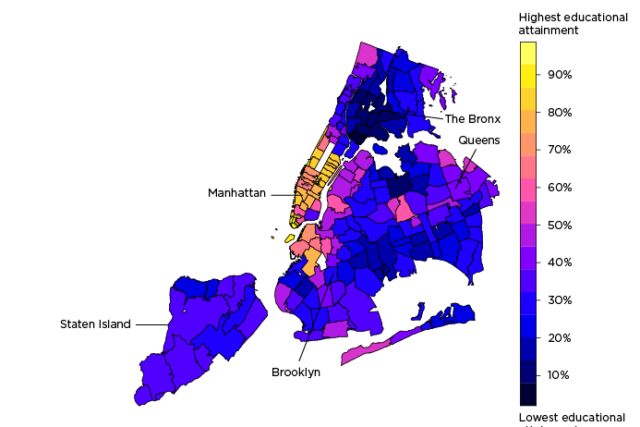According to the ChildFund organization, eleven million children live 50 percent below the federal poverty line, and 37% do not finish high school. So one out of nine children in the United States is growing up in unfavorable and unfortunate circumstances. As a result, they are not performing at their full academic capabilities.
Poverty and racism are the two most crucial factors that influence how successful students are in school and hence, in their life. According to the standardized test results in California in 2017, about two-thirds of students from low-income families did not meet grade-level standards in English Language Arts/Literacy. For students not in low-income families, the ratio was flipped — about two-thirds met grade-level standards.
Some argue that students’ achievement is determined by their teachers–that the student-teacher relationship is the most significant factor in how well a student will do. However, one can easily disprove this fact. Having competent teachers is beneficial, but that doesn’t eradicate the fact that children in low-income areas are forced to attend not-so-good institutions; they are not getting access to the same quality of education as kids in higher-income areas. For students living in poverty-stricken areas, we simply cannot say that they are being provided with the same opportunities as those in more predominantly white and wealthier neighborhoods.
In addition, students are not getting the support and stability they need at home to do well at school. “Children with inadequate home environments are often unable to do homework or other school projects, leading to poorer academic scores. This inadequate environment can be something as simple as not having a quiet place to concentrate, or a much greater parenting problem, such as abuse or neglect”, says Maria O’ Cadiz, author of various topics such as health, wellness, and education.
The big picture is that students are not at school all day. Instead, they split their time between the classroom and their homes. If they do not have the proper environment to do their homework and expand on what they learn in school, it is only a matter of time before they fall behind their classmates. This is seen more often in low-income areas/zip codes with disproportionate children of color because the families are impoverished, the parents are working to pay the rent, and they don’t have time to sit with their kids. Not only that, it can lead to more severe issues like lashing out at their kids. Students need a stable living situation—otherwise, it puts more stress on them and causes mental and physical problems that prevent them from doing well in school.
I want people to inform themselves about how zip codes limit the opportunities of minorities and impoverished students. I urge parents in specific to see how this is affecting their children and learn how they can set them up for better academic success and a better future. Reach out to your city official and local organizations for child development and wellness to find out how you can personally involve yourself in the fight for proper education, regardless of zip code.
Image source:
savi.org/2020/06/24/socioeconomic-factors-explain-why-some-new-york-zip-codes-were-hit-hardest-by-covid-19/
![]()
- United States
